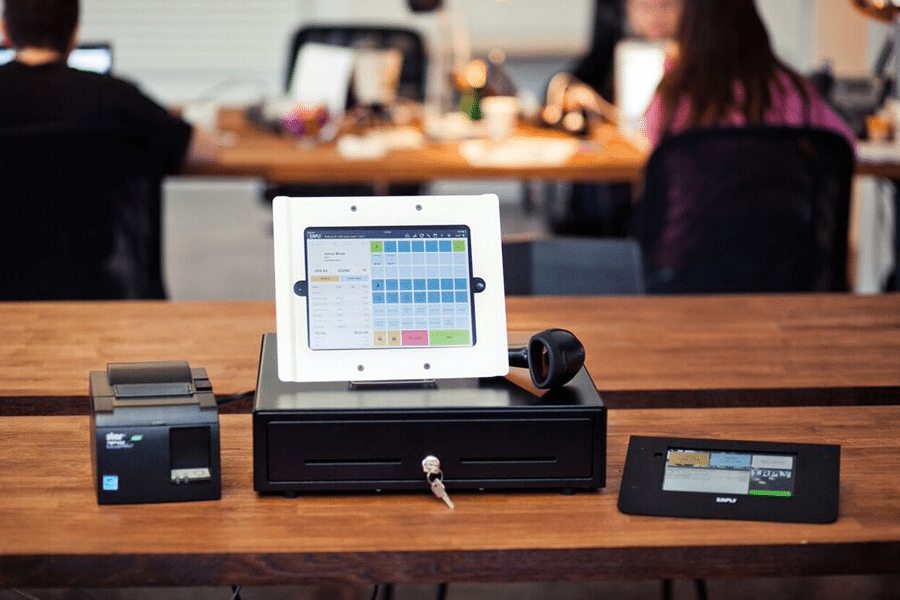Your driver left with the order five minutes ago, and suddenly the phone rings: they rear-ended a car at a light. After making sure everyone is okay, you let them know they’ll need to report this to their insurance since the driver owns the car. A few days later, the driver informs you that the claim was denied because they were using their own vehicle for work. Now what do you do?
I handled countless similar claims when I worked in insurance where an employee and employer were very confused as to which policy covered the accident. Delivery driver insurance matters for these types of scenarios. It is a type of small business coverage that gives an employee liability protection on their personal vehicle in case they get into an accident while driving for work.
What Is Delivery Driver Insurance?
Delivery driver insurance is a commercial auto policy that gives coverage to employees driving for your company or those working for a Transportation Network Company (TNC). You need it because an employee’s personal auto policy will rarely have coverage if they are involved in an accident while delivering or transporting a person for a fee.
Now, I will say when I worked in personal auto insurance, I was taught that companies see a difference between an occasional delivery driver and one that is occupational. For example: you own a pizza restaurant and have to deliver the pizzas yourself one day due to being understaffed. This would be an occasional occurrence—as it isn’t actually your job and done regularly.
Meanwhile, your employed part-time delivery driver would need to be covered since that is their actual job.
Since this is insurance and the actual area of coverage is still relatively new and constantly evolving for the industry, you really need to review all coverages and scenarios with your agent or insurance company.
Delivery Driver Insurance Cost
If you are a delivery driver or an employer considering delivery driver insurance, you can expect costs to be 10% to 20% higher than a normal personal auto policy. Unfortunately, providing an accurate cost is nearly impossible. Most insurance companies do not sell a standalone policy for delivery drivers. Instead, it is offered as an endorsement to an existing personal auto policy.
Delivery drivers create a unique risk for insurance companies. They likely do not have any formal driver safety training. If they are hauling passengers, there is an increased risk of injuries to parties that would automatically be a third-party bodily injury claim and a first-party medical claim for the insurer. The hours a delivery driver operates are not set and can range from rush hour to late at night, like driving downtown after a large event ends late in the evening.
The point? It is hard to use the law of large numbers or draw on the data insurers have when calculating premiums to accurately predict the risk associated with insuring someone driving for Uber.
Additionally, when an insurance company writes a policy for personal auto insurance, its intent is to be in the personal auto space. Many companies are dedicated to either small business or personal insurance, but not both. So, when someone decides to start driving for a TNC like Instacart, it puts their insurer in an odd place, especially if the company is only interested in writing personal auto policies.
Factors That Impact Delivery Driver Insurance Cost
Insurers will consider some specific factors when determining the cost of adding delivery driver insurance. These are:
- The type of work you do: Whether you are a pizza delivery driver vs someone driving for DoorDash will impact the cost of insurance. A delivery driver for a large restaurant is an employee of that company, which means they may have liability coverage for your auto vs a 1099 worker for a third-party app.
- Driving radius: Where you drive (zip code) and the amount of mileage you drive from your home will impact the cost of the premium.
- What you are delivering: Delivering food or groceries vs passengers represents a significant difference in risk exposure for the insurance company.
Another thing the insurance company might consider is the start date. I’m not positive about this, but from my experience in working with material misrepresentation on TNC losses, I am willing to bet if you have been driving for a while for a TNC and decide to get insurance, the provider may not be very pleased to learn you have been functionally uninsured for a period of time.
Types of Delivery Driver Insurance
When it comes to purchasing delivery driver insurance, there are several different options.
Please note: if you are driving for a TNC, check to see what type of coverage it provides and if it requires you to carry any coverage, too.
Other Business Insurance Coverages
Now, there are some other types of insurance you should consider for delivery drivers:
Workers’ Compensation
Workers’ comp is required in nearly every single state. So, if you have several employees and you aren’t in Texas or South Dakota, you probably already have this, and if you don’t, look into the state threshold requirements!
This policy helps an employee who gets injured or becomes ill because of their job. This could include injuries sustained in an automobile accident if the employee was on the road for their job.
First-party Coverage for the Vehicle
Auto insurance is a bit weird. You can purchase lots of different coverages for your vehicle, and each one will do something different. The coverages we have been discussing are all for liability—meaning coverage for other people or property if the insured driver is at fault. But none of those will fix the delivery driver’s car.
For that, you will need a first-party coverage called collision. It is a good idea to also purchase comprehensive coverage (sometimes called “other than collision”), which covers the car from non-collision losses.
Unless, of course, your driver hits a live animal. That is comprehensive. If the animal is dead and they hit it, that’s a collision. Like I said, auto insurance is weird.
Medical Coverage
In a few states, Kentucky or Florida, for example, first-party medical coverage is required by law. But regardless, it is worth looking into. This helps pay for the medical costs associated with injuries sustained in an auto loss. The coverage is no-fault, meaning you can use it regardless of who caused the loss.
Delivery Driver Insurance in the News
Ultimately, insurance companies are beholden to the laws of each state. So, a state legislature may pass a law requiring your business to insure the drivers or for TNC apps to provide some measure of insurance, as is the case in New Jersey. However, even then, that doesn’t necessarily mean there will be sufficient coverage.
A man in New Jersey was injured in an accident while driving for Uber Eats. The other party had the state minimum coverage, and it wasn’t enough to cover his injuries. New Jersey requires TNCs to provide $1.5 million in underinsured coverage. However, since he was not driving for Uber but for Uber Eats, the courts ruled he was not entitled to that coverage.
The point? Do what you can to protect your employees and make sure you’ve got all of the appropriate coverages in place for them.
Deliver Driver Insurance on Reddit
I checked Reddit to see what delivery drivers were saying about insurance. It was a combination of the expected and unexpected.
What’s expected is the high price, though it is shocking to many users. The average price different delivery drivers on Reddit are paying ranges from around $300 to $450 a month. Understandably, this high cost causes some consternation among users.
The unexpected thing is the encouragement to commit insurance fraud. A common theme is to not tell your insurance company you were working as a delivery driver, especially if you get into an accident. The common belief seems to be that if you don’t tell them, no one will ever know.
The problem with this is, first, this is borderline insurance fraud. If you have materially misrepresented the facts of the loss to receive a payment from the insurance company and get caught, you can get into trouble.
The second issue is that car accidents almost always involve another vehicle. All the investigating adjuster has to do is ask the other party a question like, “Did you notice if they were driving for Uber, DoorDash, or something like that, maybe a pizza restaurant?”
Sometimes the adjuster doesn’t even have to ask. I had many people volunteer information about the other person driving for Uber or a restaurant, often wondering if they should contact that company to handle the claim. Or, simply saying something like, “I felt so bad for them. They were Ubering someone to the doctor and missed their appointment because of the accident.”
Here’s the deal: delivery driver insurance can be expensive. But the cost of getting caught lying about it can be worse, both financially and legally. Be honest with your insurance company from the very start.
Frequently Asked Questions
Last Bite
Customers typically expect restaurants to offer delivery, so there is a good chance your business will be sending drivers out with orders on a regular basis. Make sure they are covered and your business is protected with delivery driver insurance.
Purchasing an endorsement for your general liability is the easiest and safest method. It is also a good idea to speak with employees about the expectations and insurance they should carry for their vehicles because if neither you nor the driver has proper coverage and they get into an accident, missing that 30-minute delivery window will be the least of your problems.



